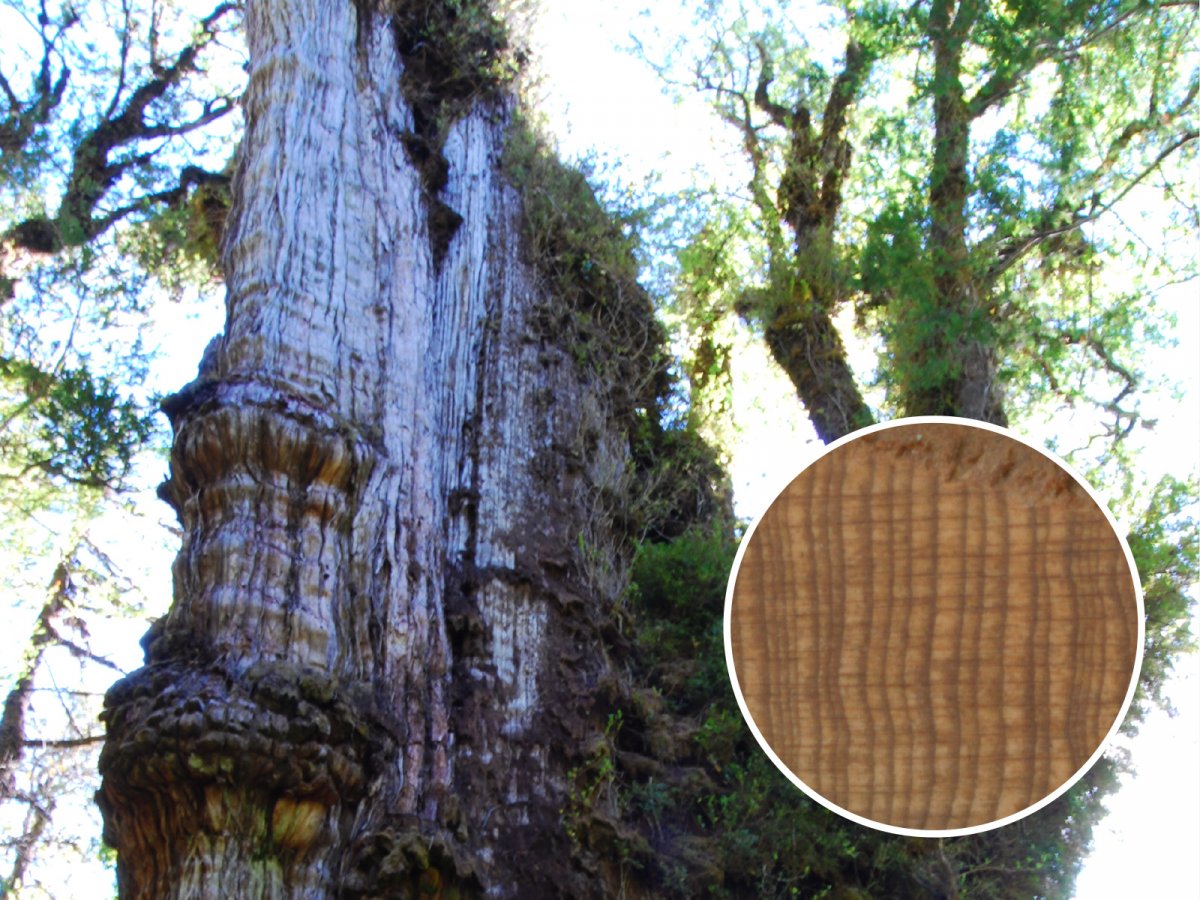In Chile's Alerce Costero National Park, there is a very big, very old tree. Alerce trees don't live fast and die young. They grow extremely slowly and live for a long, long time. As first reported in Science, Jonathan Barichivich says that the Alerce Milenario is the oldest tree of all: likely at least 5,000 years old, just after we entered the Bronze Age. That's a lot older than the previous record holder, an eastern Californian bristlecone pine thought to be 4,853 years old.

Barichivich is an environmental scientist who grew up on his family's indigenous land at the front of the park, and amid his passion for other climate science issues, he has dedicated his life to studying and protecting the alerce trees.
The Alerce Milenario is the largest tree in the rainforest. Because alerce trees grow so slowly, it was suspected that the tree was extremely old because it's so big, with a trunk diameter of over 13 feet.
Such a large tree became a tourist attraction for the park. After investment in road infrastructure in 2012 that improved accessibility, Barichivich said that the park has seen over 10,000 visitors a year, all of whom wanted to see the Alerce Milenario. There is a platform surrounding the tree's roots, but it's not well guarded or signed, so people often climb off the platform and walk over the roots. The only problem, Barichivich said, is that the tree is very vulnerable. Only 28 percent of the tree is actually alive, most of which is in the roots, so when people walk across the nearby soil, they're actively damaging the last remaining living parts of the tree.
"To me, this tree is like a family member. Seeing him like this is breaking my heart, it's like seeing a lion in a cage in a zoo," Barichivich told Newsweek. Members of his family call themselves guardians of the alerces, and generations before him were park rangers dedicated to protecting the land and the trees. As an environmental scientist, the best thing he could do for the trees is to prove how important they were to science, and that they were worth protecting.
Usually, the age of a tree is measured using dendrochronology. A borer is inserted into the core of the trunk, and the number of growth rings present corresponds to how old it is. However, the Alerce Milenario is too wide for the standard 2.9-foot borer to reach the inner core, and Barichivich said that often trees this old have a rotten core anyway. One other option is to use the bore on the roots and carbon-date them, but that would damage the roots, and that's the last thing Barichivich wants to do.
"The objective is to protect the tree, not to make headlines or break records," he said. "It's not the point to make a big hole in the tree just to know that it's the oldest. The scientific challenge is to estimate the age without being too invasive to the tree."
To measure the age of the alerce without damaging it, Barichivich and Antonio Lara, of the Austral University of Chile, used a statistical modeling approach to predict the age of trees based on knowledge of how they grow when they're young, creating a Bayesian distribution of the likely age of a given tree using data from 2,400 trees.
Barichivich's age estimate for the Alerce Milenario was 5,484 years old. He can say with near certainty that the tree is at least 5,000 years old.
As his data and methods haven't yet been published formally, there is skepticism in the scientific community about this result, especially since it's a record-breaking prediction.
Barichivich doesn't mind. "The alerce is the second-longest living species, so you would expect to see old trees. My method is verified by studying other trees that you can obtain the full growth rings of, and it follows a biological law of growth-longevity trade-offs. The alerce is where it should be on the exponential growth curve: it grows slower than the bristlecone pine, the oldest known tree, which indicates it should live longer," he said
Barichivich hopes that his methods can work towards a future of tree research where dendrochronology would damage a vulnerable tree like Alerce Milenario, and that his discoveries about his family's revered tree will be an impetus to make park authorities do more to protect the gentle giant.
Uncommon Knowledge
Newsweek is committed to challenging conventional wisdom and finding connections in the search for common ground.
Newsweek is committed to challenging conventional wisdom and finding connections in the search for common ground.
About the writer
Jess Thomson is a Newsweek Science Reporter based in London UK. Her focus is reporting on science, technology and healthcare. ... Read more
To read how Newsweek uses AI as a newsroom tool, Click here.








